Growing alpine asters
Without a doubt, aster is the flower that will always be popular, which is why it can be seen quite often in the garden of many gardeners. This flower is really beautiful. And the Alpine aster is distinguished by its special sophistication and attractiveness.
Content:
Alpine aster and its features
Alpine aster is a perennial aster that is distinguished by earlier flowering in relation to its relatives. Aster blooms in early June, and if the spring is warm, then flowering may begin earlier, even at the end of May.
Aster flowers resemble chamomile, which is why this flower is also called alpine chamomile. Plant height reaches 20-30 centimeters. The diameter of the flower is 5-6 centimeters. The stems of the plants are covered with gray leaves, which have a short and hard pubescence. The basket inflorescences are similar to chamomile, they open in June. The petals are painted lilac or blue, less often asters with pink or white flowers are found.
The plant is frost-resistant. Alpine aster can be herbaceous or semi-shrub, its root is quite branched and has a horizontal arrangement. The seed pods are formed at the end of the flowering period of the plant, namely at the end of July.
Growing alpine asters is very popular on rocky slides and in rock gardens, so it will be a worthy decoration for any yard, garden or flower bed. In addition, this plant is beautifully combined next to a grayish-bluish cloves, from Iberis, from gypsophila creeping (for low-growing varieties) and with yarrow (for medium-growing varieties). Tall varieties are taken for a cut.
In addition to its decorative properties, alpine aster is also used in medicine. For example, its flowers are used to make infusions that help fight diseases such as tuberculosis and scrofula, as well as gastrointestinal disorders.
Alpine aster: growing
Alpine asters are grown using seeds and vegetatively. Freshly harvested seeds are sown directly into open ground in the spring or fall. The sowing depth is about 0.5 centimeters. The distance between the asters should be about 20 centimeters. Flowering begins in the second year.
The division of the bush and cuttings are referred to vegetative propagation. Alpine asters are divided after flowering or in spring. The root suckers that the plant gives can be used as planting material. Once every few years, it is necessary to divide the plants, since the buds of the aster wake up at the base of the shoots of the previous year. If you do not do this procedure at least once every three years, then the plant will begin to thicken and fall out. Asters grow very quickly if all the few requirements are taken into account.
Propagation by cuttings is used to a greater extent only when breeding varietal specimens of asters. At the same time, they take the apical green shoots and divide them into parts (they must have at least three buds). They are grown in greenhouse conditions.
After the formation of the root system, at about the end of autumn, the plant is already planted in open ground. But in winter, they must be insulated.
Alpine aster care
When growing alpine asters, it is important to pay attention to the following points:
- The soil.
Alpine aster grows well on ordinary garden soils. The soil should be alkaline, light and loose so that moisture and air can freely penetrate to the roots. Plots of land that are flooded in spring or autumn are not suitable for asters.
- Fertilizer.
In the spring, it is necessary to apply phosphorus and potash fertilizers, especially at the time of plant transplanting or pruning.
- Watering.
Alpine aster loves quite abundant watering, but within reasonable limits. If the aster grows in arid territory, then its growth and flowering will not be so generous.
- Location.
Aster needs a sufficient amount of sunlight, so the place where it will grow should not be too shaded, but, on the contrary, open.
- Wintering.
For the winter, old alpine aster bushes need to be mulched with sand or soil, the buds should be under cover.
- Pests and diseases.
In general, alpine aster is not afraid of either pests or diseases. But, for example, if the plant does not receive enough sunlight, it may appear powdery mildew... If, after eliminating this cause, that is, after transplanting the plant to a more suitable place, the problem is not resolved, you can treat it with a fungicide. In addition, such treatment can be done from time to time for preventive purposes.
So, growing alpine asters is a rewarding business. She is actually unpretentious, but she is ready to delight her owners with a very beautiful and abundant flowering.



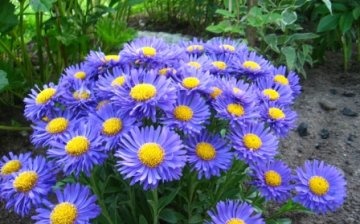
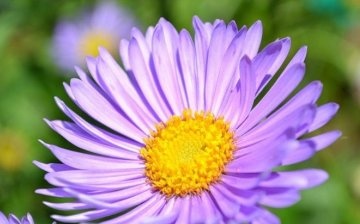
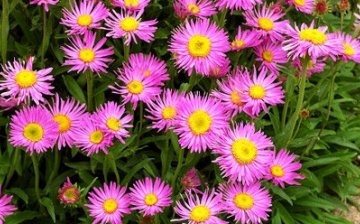
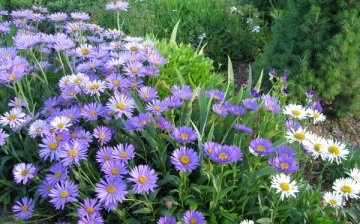




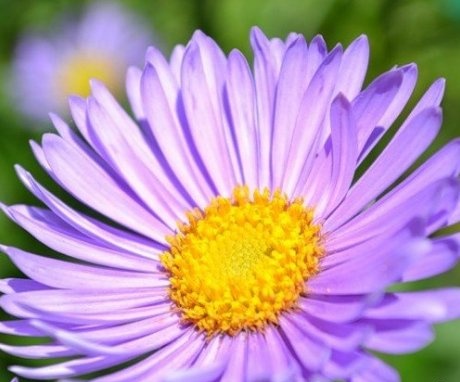
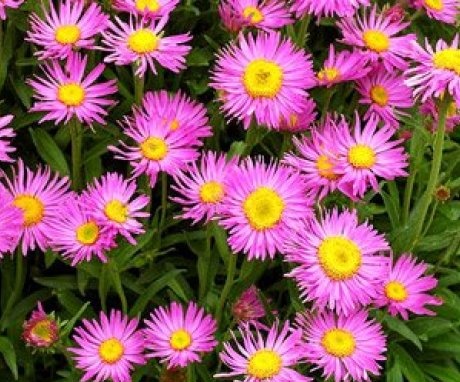
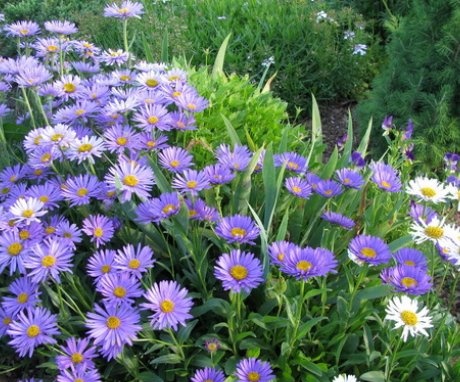
Alpine aster is a very beautiful and unpretentious plant that requires minimal maintenance. And if you give her a little care and attention, she will delight with her flowers until the very frost.
Alena, I agree with you. Such asters grow here and really do not require any care, but they bloom until the very frost and stand in the water for a very long time when cut.